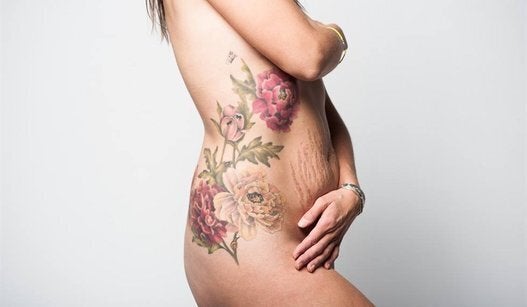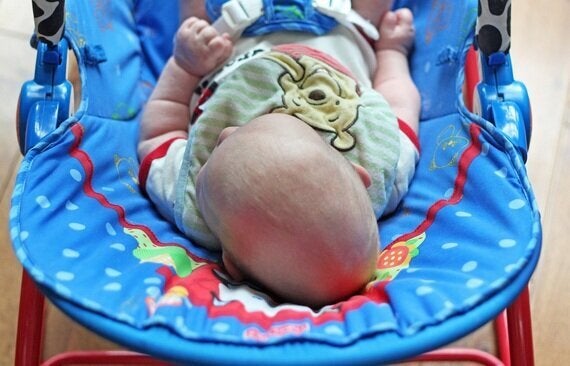
When our third baby boy was born we couldn't have been more happy. Labour and delivery was fast and uneventful, and I couldn't wait so snuggle our precious new bundle skin-to-skin. While we were enjoying our snuggle session, one of the nurses did a quick examination that's done on every newborn. Upon this exam it was discovered that he had a bony ridge on the back of his head and no soft spot on the back as well.
I asked if this was normal, thinking to myself it would surely correct itself, and the nurse subtly shook her head. When it was brought up to the doctor, we were told not to worry about it, so we didn't. As a registered nurse and mom myself, I assumed and was hoping that surely it was from a quick delivery and that two of his skull bones had overlapped and formed a ridge, but that with brain growth the bones would smooth out with a bit of time.
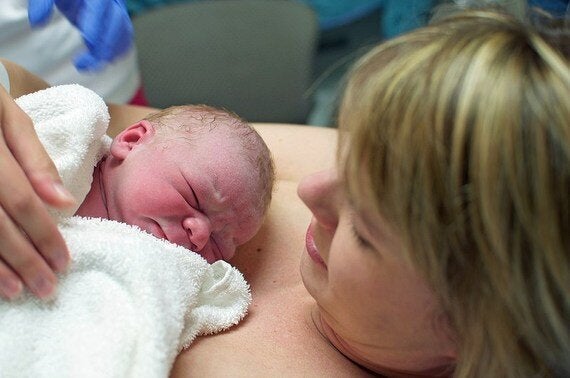
However, at our two- and six-week post-partum appointments, the ridge was still there, and there was still no soft spot. Again I brought up my concerns, and again I was told not to worry about it. But I did. We don't want anything to be wrong with our babies ever, so I admit that I consciously swept it under the rug at the back of my mind willing for there to be nothing wrong with his head.
It was becoming evident in photos of our baby that his forehead was very round and protruding, and his temples looked "pinched" into his head. He also had a very marked flat spot on the back right side of his long and narrow head shape.
I told myself that if he still had this ridge and misshapen head at his two-month vaccination appointment, at the very least I would bring it up to the nurse that I would like a referral to the head shape clinic, as perhaps he would need a head-shaping helmet like the plagiocephaly (flat head syndrome) babies.
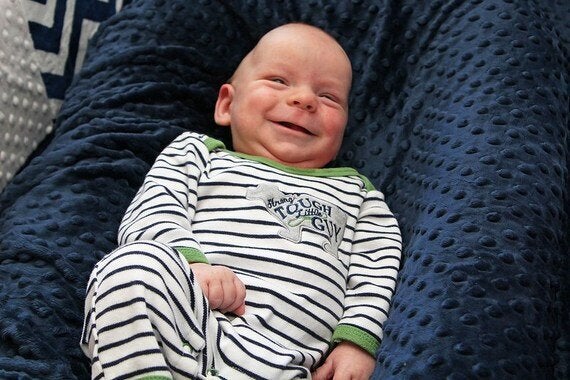
Then I published his monthly update when he turned two months old on my blog, and a stranger reached out to me and wrote me an email later that day. She told me she tried to write this same email multiple times but hesitated because she didn't want to offend me. In the end she felt she had to do it and it turned out to be one of the greatest blessings of my life.
She told me by viewing many pictures of our baby, that it looked like he had sagittal craniosynostosis. Within a 10-second Google search, I knew that she was right and that I finally had a name for what had been wrong with his skull since birth.
She pressed upon the urgency of getting him seen fast. The reason for this was because she had known that something was wrong with her daughter's skull shape, but her daughter was diagnosed later at six months and needed an eight-hour surgery to repair her synostosis. Since our baby was young enough, he was eligible for an endoscopic surgery that only took 1.5 hours.
Babies are eligible for the less invasive endoscopic surgery before 16 weeks of age, depending on the surgeon, because their skull bones are still soft and pliable. They will also require helmet therapy to properly finish shaping the skull.
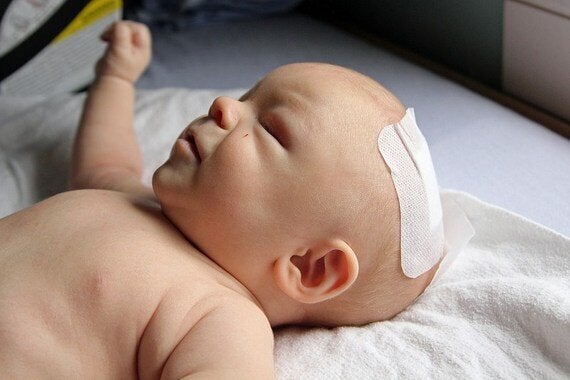
One day post-op from endoscopic sagittal synostosis repair
It's a very personal decision, but for our family it was the right choice to opt for the less invasive surgery for our baby. Less time in the operating room under anesthesia, less recovery time in the hospital, and most importantly for my mama heart -- less time to wait and worry.
What is craniosynostosis?
A baby's skull is not one big piece of bone, it's made up of several bones separated by fibrous joints called sutures. When one or more of these sutures fuse early, it causes the head to grow in an odd shape, doesn't allow the brain proper room to grow and is called craniosynostosis.
Often the only treatment is endoscopic surgery to either remove a piece bone (a craniectomy) to create an artificial suture to allow the head to grow in a proper shape, or a full cranial vault remodeling surgery where the skull is completely removed and properly shaped. Craniosynostosis only happens once in every 2,000 births, and more people, especially medical professionals, need to be aware of and screen for it.
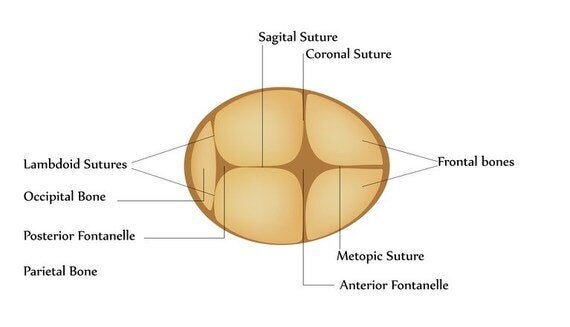
What can you do?
September is craniofacial awareness and acceptance month, and it's the first year that this has ever truly meant anything to me. This is my plea to you to pay attention to baby head shapes and to not be afraid to say something to a parent if you notice their baby's head is oddly shaped. If it hadn't been for the kindness of a one of my blog readers, I never would have been so persistent in advocating for quick treatment for Jonathan's craniosynostosis.
Some of the symptoms of craniosynostosis are:
- Bony ridge on skull at the affected suture
- Closed soft spots
- Misshapen head (different shapes for different types of synostosis)
- Slow growth of the head
- Signs of increased intracranial pressure (headache, nausea, vomiting
Our baby had his surgery when he was 11 weeks old and has done absolutely amazing every step of the way. He is now wearing a cranial helmet to allow his head to grow in the proper shape and I think he looks pretty darn cute! Luckily for us, craniosynostosis is repaired and it is not an ongoing medical issue that we have to worrry about for the rest of his life.
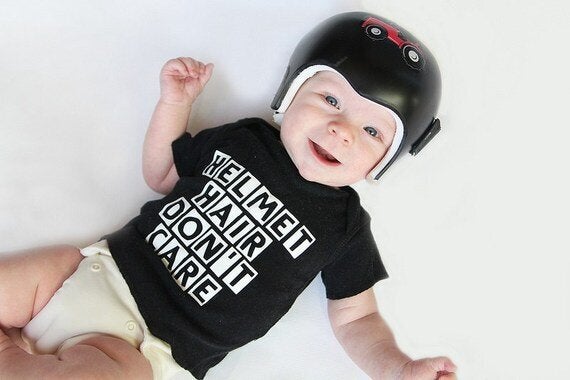
It is my mission to advocate for craniosynostosis awareness so that more babies can be diagnosed and have early intervention like we did.
Follow HuffPost Canada Blogs on Facebook
Also on HuffPost:
